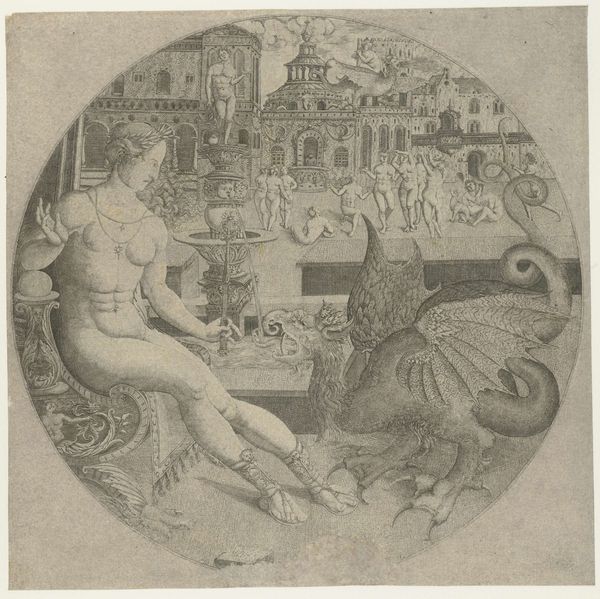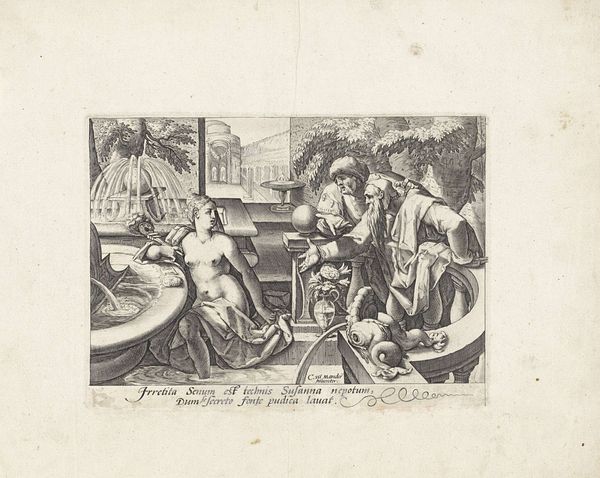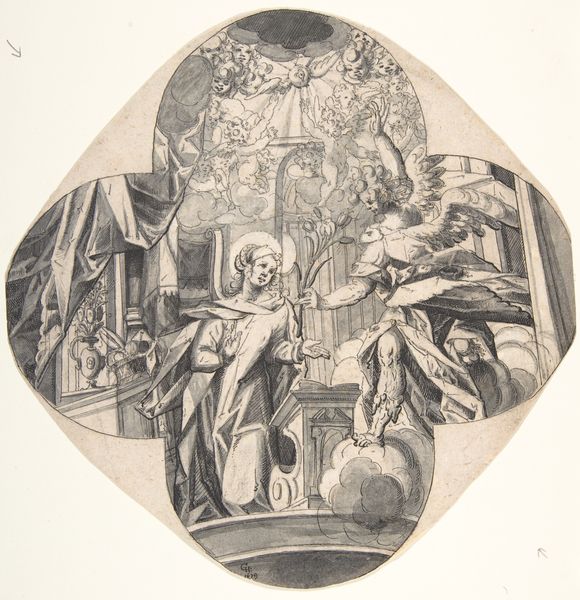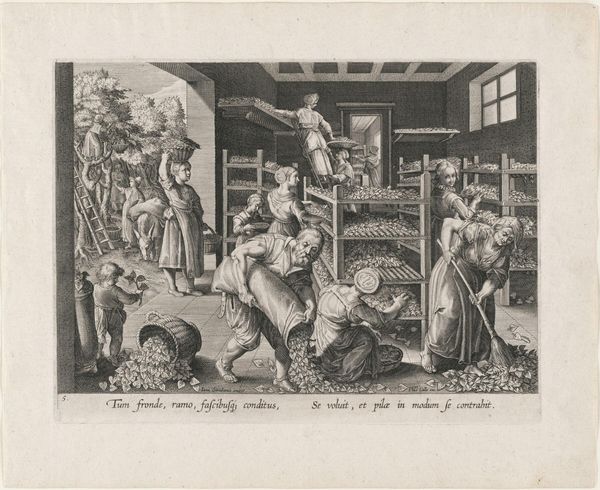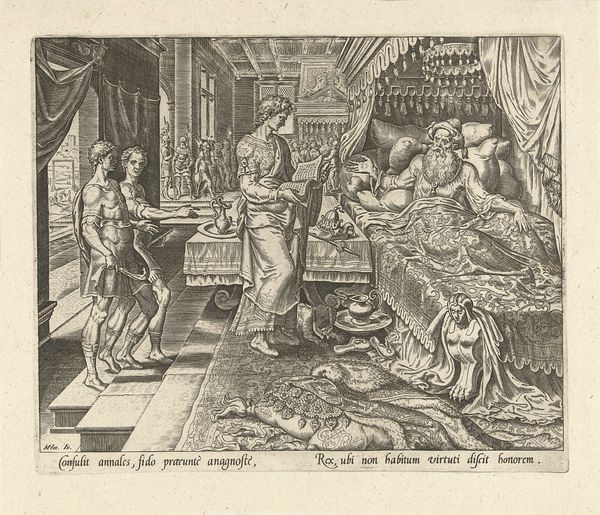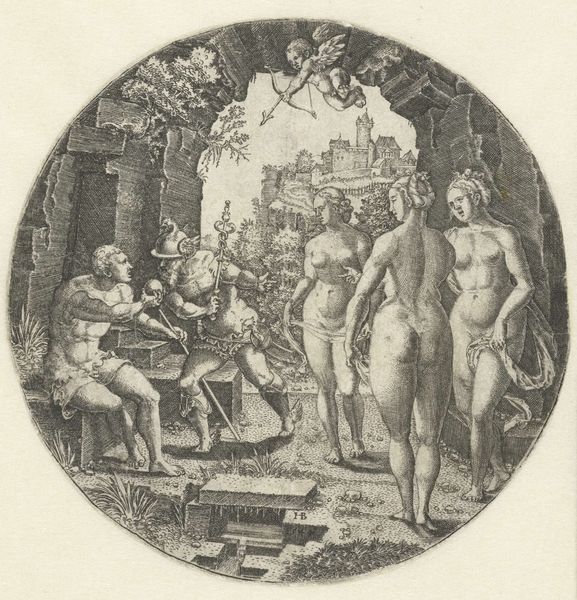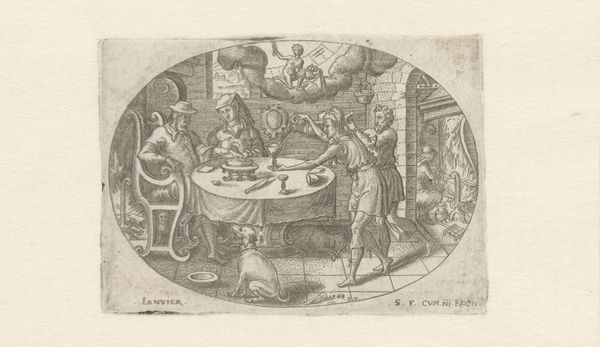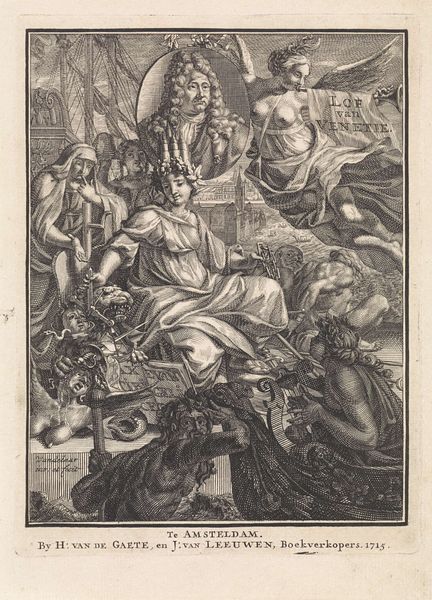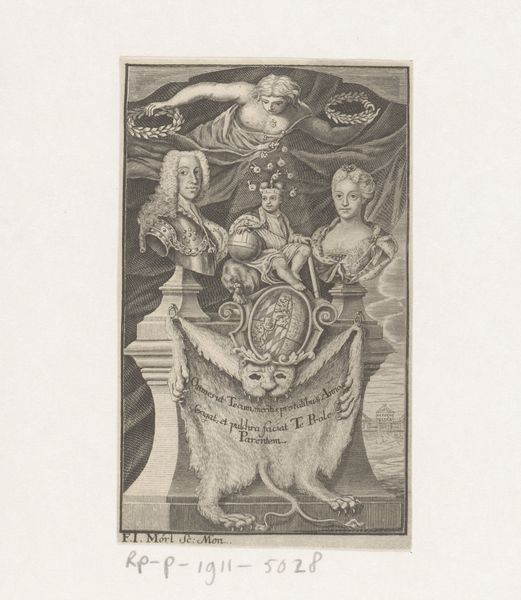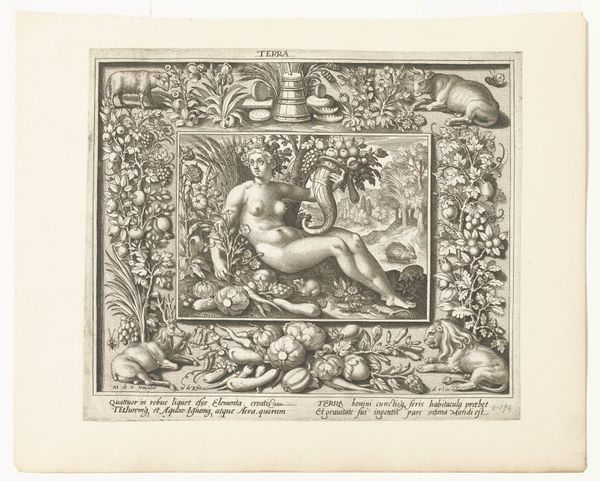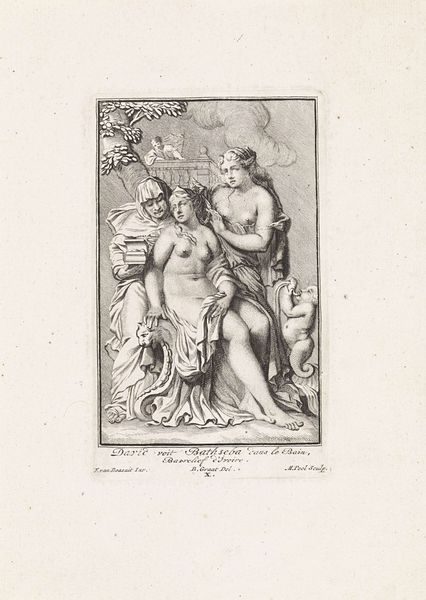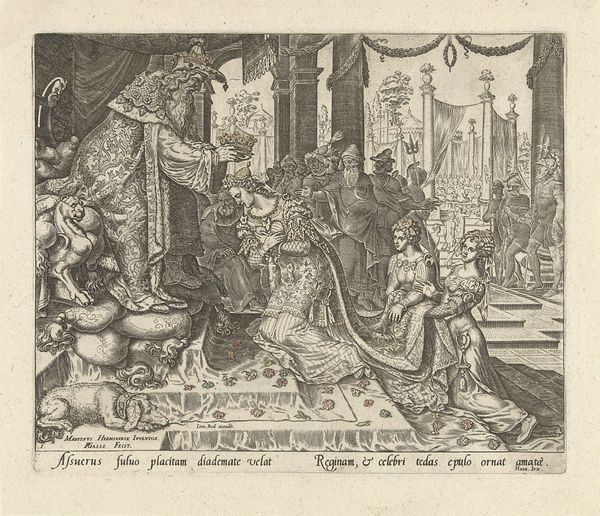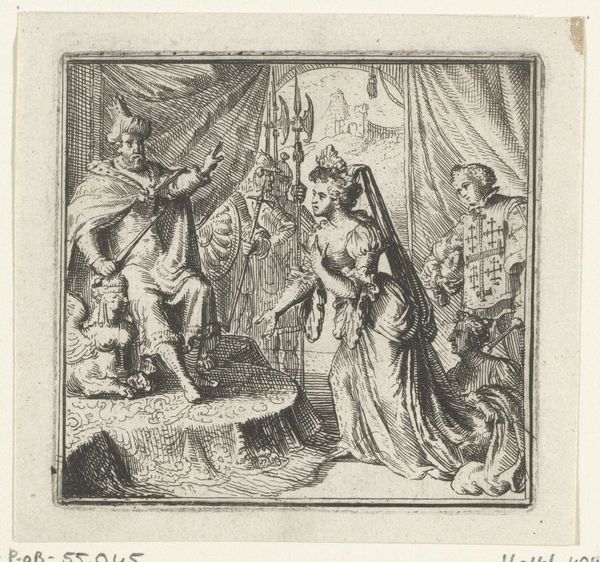
Dimensions: height 205 mm, width 248 mm
Copyright: Rijks Museum: Open Domain
This engraving, titled "Geneeskunde" or "Medicine," was created by Philips Galle in the Netherlands, sometime around the late 16th century. It depicts Panacea, the goddess of remedies, surrounded by tools and ingredients associated with medical practice. The image offers a window into the medical culture of its time. Observe the contrast between the classical figure of Panacea and the more contemporary scenes of medical treatment and pharmaceutical preparation. The presence of both traditional and emerging practices reflects the transitional state of medicine during the Renaissance, as it moved from ancient humoral theories towards more empirical methods. The engraving also raises questions about the social role of medicine. Was it seen as a divine gift, a learned profession, or a commercial enterprise? Did it challenge existing social norms or reinforce them? Investigating medical treatises, apothecary records, and visual representations of doctors and patients from this period, we can start to answer questions about the meaning of art as contingent on the social and institutional context of its creation.
Comments
No comments
Be the first to comment and join the conversation on the ultimate creative platform.
